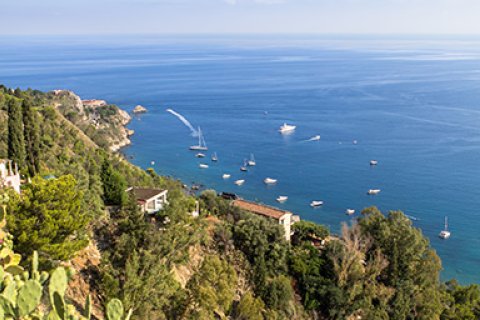Earthquakes in Italy: one deadly source less

For a long time, people feared there would be a major earthquake off the coast of southern Italy that would make the recent deadly earthquakes in the central Apennine mountains look like child’s play. Utrecht geoscientists have now determined that there is little likelihood that this will happen. They have published their results in Geophysical Journal International.
The most severe earthquakes occur in locations where one tectonic plate slides under the other. One such location can be found just to the south of Italy, in the Ionian Sea: this is the Calabrian subduction zone. The sliding often goes hand in hand with substantial resistance between the two tectonic plates, with major earthquakes as a potential result. The absence of historical evidence of a major earthquake in the Calabrian subduction zone can mean one of two things: either the fault has been locked for thousands of years and will come loose at some point, resulting in an earthquake, or the blocks of rock are gliding smoothly past one another.
Low resistance
Using a dense network of GPS measurements, it is possible to determine whether intermediate faults are encountering high or low resistance. However, GPS stations are only found on land and a network of GPS measurements for the Mediterranean seabed is still in the development phase. And that is why Utrecht University PhD candidate Nicolai Nijholt developed a physical model that can be used for explaining the measurements of tiny deformations of the earth's crust. The results show considerable differences in the resistance in major fault zones that are known in the area. “The fact that the resistance is high for faults where historical earthquakes have occurred instils confidence in the results", says Nijholt. “The resistance in the Calabrian subduction zone was unknown but it turns out that it’s very low. That’s why it’s unlikely that a major earthquake will occur here".
Easily deformable rock salt
The African plate, of which the seabed and subsoil of the Ionian Sea form a part, is therefore sinking fairly smoothly below Italy into the Earth’s mantle. A possible reason for this low resistance is that the Mediterranean seabed is covered with a thick layer of rock salt. It is possible that this rock salt has also found its way into the submarine fracture zone; compared to other stone, rock salt is easy to deform and so puts up little resistance.
“Despite this good news, the inhabitants of southern Italy should still assume that future earthquakes and even tsunamis may occur", warns Nijholt. “The resistance in other fractures is high and history shows that it is only a matter of time before the next natural disaster happens".
Publication
Nicolai Nijholt, Rob Govers and Rinus Wortel (2018), ‘On the forces that drive and resist deformation in the south-central Mediterranean: a mechanical model study, Geophysical Journal International

